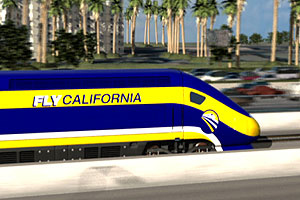 Credit: California High Speed Rail AuthorityThe devil's in the details, so the details aren't entirely in the proposition. There are still many open questions about Prop. 1A on the November ballot, the proposal to bring high speed rail to California - and that makes sense, since there are a billion details, many of them contentious, in any $9.95 billion initiative and $45 billion project.
Credit: California High Speed Rail AuthorityThe devil's in the details, so the details aren't entirely in the proposition. There are still many open questions about Prop. 1A on the November ballot, the proposal to bring high speed rail to California - and that makes sense, since there are a billion details, many of them contentious, in any $9.95 billion initiative and $45 billion project.
One of those outstanding questions is: Where will the train go?
In the Bay Area, that has been a huge issue. There are two proposed routes (check out an interactive map here) -- one through the East Bay and the Altamont Corridor toward Sacramento, and the "preferred alternative," which runs down the Peninsula, through San Jose, Gilroy and the Pacheco Pass, and then loops back around to Sacramento.
Some rail advocates filed a lawsuit, pushing the state to do more study, particularly environmental study. The Pacheco Pass route cuts through some pristine landscape, and that worries environmentalists. And the Altamont route runs through some of the heaviest traffic corridors in the Bay Area, so a high speed train could relieve some of the East Bay's congestion. In addition, the Peninsula communities of Menlo Park and Atherton joined the lawsuit, because they're concerned about the potential of massive above-the-street construction there.
The Rail Authority says it's working with communities to answer their concerns. For instance, it's possible that some of the high speed rail stations could go below ground on the Peninsula -- and that they hope to build BOTH routes eventually. Right now, they say, the Pacheco Pass route is preferred, but they point out that it's a long way till the tracks go down and the train starts running, and there will be a lot to work out over the next decade.
